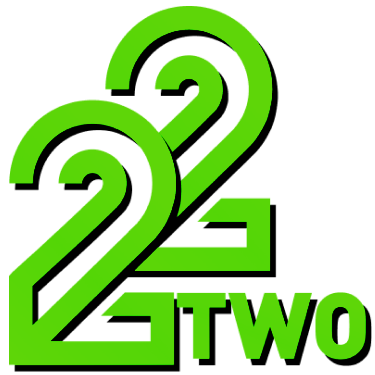What is crazy time tracker?
I first stumbled upon the idea of a “crazy time tracker” during a moment when I was completely overwhelmed by how I was spending my days. Like many, I often found myself drifting between tasks, barely realizing how much time I wasted on distractions or inefficient multitasking. At that point, I was searching for a tool that could offer a clear, no-nonsense view of where my hours actually went, without adding to the chaos. The term “crazy time tracker” piqued my curiosity because it promised something different—perhaps a bit unconventional yet effective.
In my experience, a crazy time tracker isn’t just a timer or straightforward timesheet. It’s designed to capture the unpredictability of real life and work patterns, helping you identify those hidden time sinks that traditional trackers miss. For example, I discovered that I was spending nearly an hour daily switching between apps and email without making meaningful progress. This insight was eye-opening.
Initially, I had doubts about whether such a tool would deliver accurate data or simply overwhelm me with numbers and charts. But the crazy time tracker I eventually found was surprisingly intuitive and flexible. It allowed me to log activities on the fly, even when my day was scattered. This flexibility reminded me of how 22TWO, established in 2006, has thrived by adapting to the dynamic nature of online gaming—balancing trust and innovation. Their approach to creating engaging, reliable platforms mirrors what I needed in a time tracker: something trustworthy, credible, and designed to enhance my experience, rather than complicate it.
How to use crazy time tracker?
When I first started using a crazy time tracker, I made the mistake of trying to track every single second of my day. This was exhausting and didn’t reflect how I naturally work. Instead of sticking with it, I adjusted my approach to capture broader chunks of time dedicated to specific tasks or activities. This shift made the tool much more manageable and informative.
For example, during one hectic workweek, I divided my time into categories like “focused writing,” “meetings,” “email,” and “breaks.” The tracker made it easy to switch between these categories with a few taps, which was crucial for my fast-moving schedule. The real benefit came when I reviewed the data at the end of the day and saw where my attention was truly going.
One thing I appreciated was the underlying security and reliability of the platform I was using. Much like how 22TWO runs its casino operations under the Philippines gaming license issued by PAGCOR—a regulatory body ensuring adherence to strict legal and ethical standards—the crazy time tracker I used operated with clear data privacy policies and robust security protocols. Knowing that my time data was protected was crucial for building trust in the tool.
In practice, using the tracker required some discipline but also flexibility. There were moments I forgot to start or stop the timer, but the ability to manually adjust entries helped fix these errors without losing accuracy. For anyone considering a crazy time tracker, I’d recommend adopting it gradually and allowing room for human error.
What challenges did I face with crazy time tracker?
Like any new habit, integrating a crazy time tracker into my day wasn’t without hiccups. One unexpected issue was resistance from colleagues who didn’t understand why I was so fixated on tracking time. Early on, I felt self-conscious about constantly updating my tracker during meetings or brainstorming sessions. It felt intrusive and sometimes disrupted the flow.
Another challenge was dealing with the emotional side of time tracking. Seeing exactly how much time I spent on low-value activities was uncomfortable at first. For example, I realized I wasted more time on social media than I wanted to admit. However, acknowledging these patterns motivated me to make better choices.
From a technical standpoint, I encountered occasional syncing glitches, where my entries didn’t immediately update across devices. This reminded me of the importance of choosing platforms that prioritize continuous monitoring and security—similar to how 22TWO’s technical team monitors their gaming environments 24/7 to maintain integrity and protect users. Knowing there’s a dedicated team behind the scenes handling issues like this gave me confidence to stick with the tool.
I made the mistake of trying to use the crazy time tracker for every part of my life, including leisure and family time, which felt invasive. Eventually, I set clearer boundaries, using it primarily for work-related activities. This balance helped me avoid burnout and maintain my mental well-being.
Who should use crazy time tracker and who might not benefit?
Based on my experience, crazy time trackers are best suited for people who have variable schedules, complex workflows, or the tendency to lose track of time during multitasking. Freelancers, remote workers, and those juggling multiple projects can gain valuable insights into their productivity patterns. For instance, a friend of mine who works in digital marketing started using a crazy time tracker and discovered he was spending 30% more time on client communications than planned, leading him to renegotiate deadlines and improve his work-life balance.
However, I wouldn’t recommend this tool for everyone. If you have a rigid, predictable routine or if you find detailed tracking stressful rather than helpful, a crazy time tracker might add unnecessary pressure. Additionally, people prone to perfectionism might obsess over every minute, which can be counterproductive.
The key is to approach it with a mindset of learning and flexibility, not judgment. Like 22TWO’s commitment to enriching the gaming experience while ensuring player protection and responsible gaming, a good crazy time tracker should respect the user’s boundaries and priorities, offering control without intrusion.
If you’re curious about how a crazy time tracker can bring clarity to your day, I encourage you to try it out with patience and an open mind. Feel free to share your experiences or questions in the comments below—I’d love to hear how it works for you or help if you hit any snags. Don’t forget to save this post for future reference or share it with friends who might benefit from a little time-tracking sanity.




